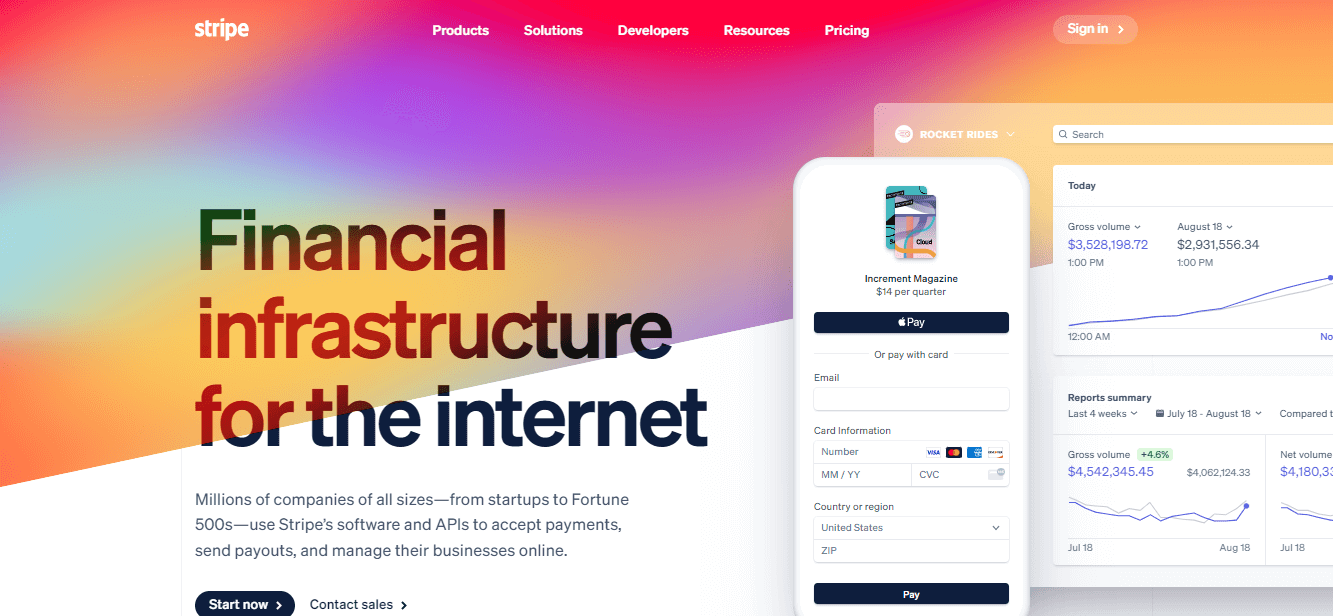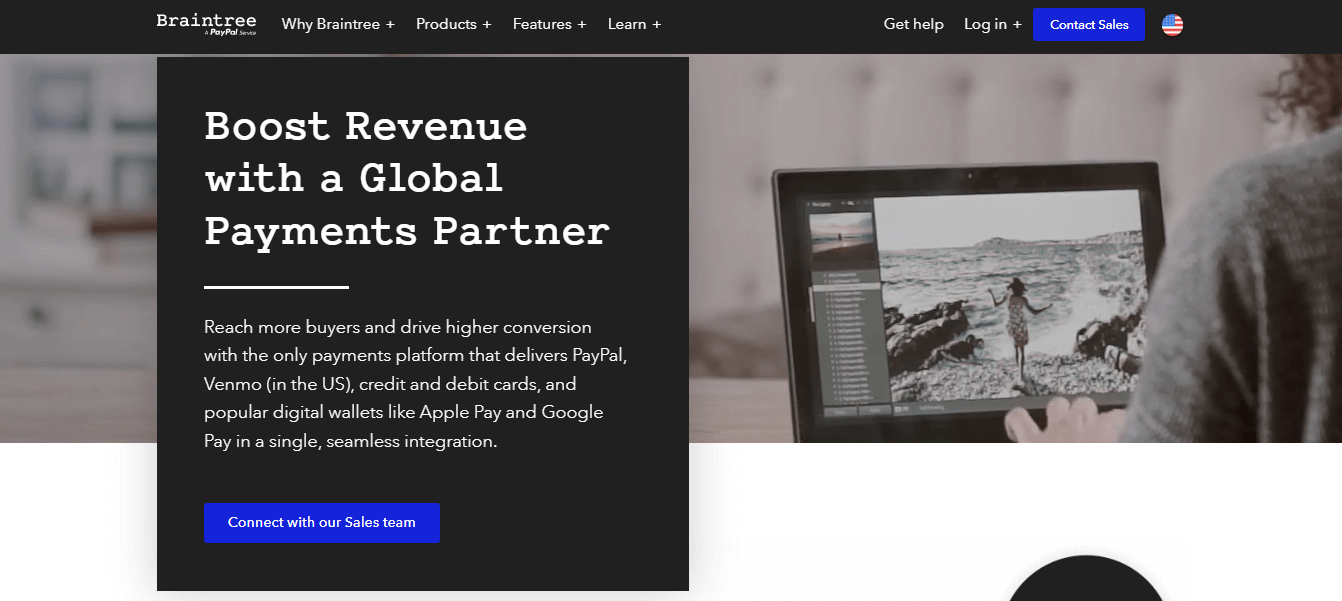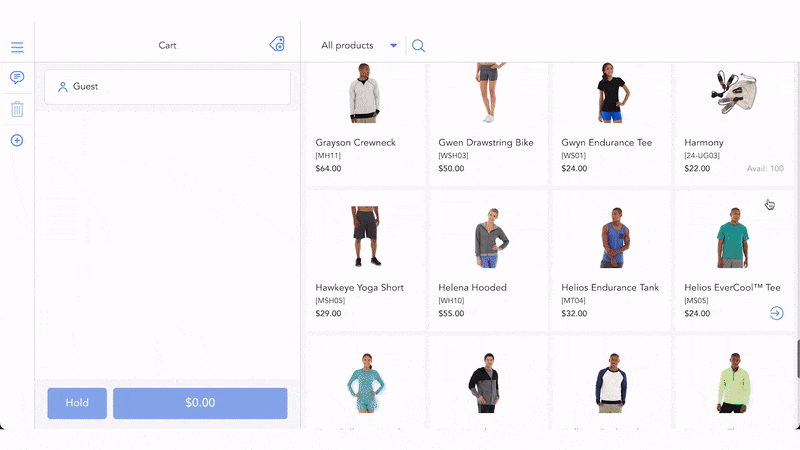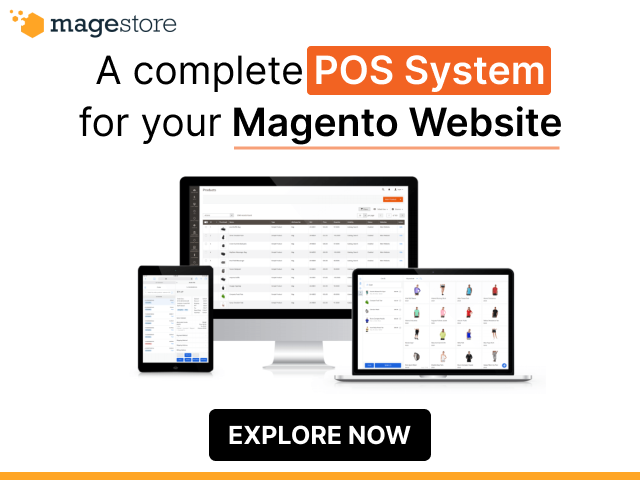Magento payment gateways are the backbone of your eCommerce business and play a crucial role in the checkout process. It supports multiple payment methods, thus offering an easy and seamless experience for customers to purchase your products. However, with so many options available, it can be overwhelming to determine which one is the best fit for your Magento store. In this article, we’ll dive into the top 7 payment gateway in Magento 2, highlighting their features, benefits, and the criteria to choose the right fit for your business needs. So, let’s get started!
What is a payment gateway?

A payment gateway is an eCommerce transaction service that approves digital payments for businesses. It connects the customer’s shopping cart to the payment processor and the merchant’s acquiring bank. The payment gateway is responsible for securely transmitting the customer’s payment information to the payment processor, which then communicates with the acquiring bank to complete the transaction.
When a customer places an order on an eCommerce website, they enter their payment information into the checkout page. The data is then encrypted and safely transmitted to the payment processor by the payment gateway. If the transaction is approved, the payment gateway sends a response back to the website, confirming the purchase.
How does the payment gateway work?

A payment gateway functions by securely authorizing a transaction through 4 steps as follows:
• Step 1: A customer chooses the item they wish to buy and makes an order by entering their credit card information on the checkout page. The transactional data is transmitted to your payment gateway in an encrypted state.
• Step 2: The payment gateway gets the order and uses a digital certificate to verify the store’s authenticity—a sort of your online shop ID. When a customer selects a payment method, the payment gateway sends the information to either the acquiring bank (for Magento credit card) or a merchant account (for other types of payments).
• Step 3: The issuing bank or credit card like Mastercard, VISA, Maestro, or American Express authenticates the transaction to decide whether to accept or deny the transaction (based on the costs available on the customer’s bank account).
• Step 4: The bank transfers money to the payment gateway, which redirects the processed payment to the merchant account. Depending on the payment gateway, the funds may show on a merchant account within a few minutes or a few working days.
Criteria to evaluate a payment gateway for Magento (Adobe Commerce)

A well-functioned payment gateway plays a vital role in creating a seamless checkout experience for your online shoppers. It must be qualified and adaptive to your Magento store, business goals, and strategic directions. When evaluating payment gateways for your Magento website, you should consider several criteria, including:
- Security: The payment gateway should be PCI compliant and use advanced security measures to protect against fraud and data breaches.
- Integration: Seamless integration with Magento and your hosting provider is a must for the payment gateway. In addition, it should support various payment methods to give customers more alternatives to pay, such as common credit cards and digital wallets.
- Fees: The pricing must be transparent with affordable transaction fees.
- Customer support: The payment gateway should offer reliable customer support to help you troubleshoot any issues.
- User experience: The payment gateway should provide your customers with a smooth and intuitive checkout experience.
Furthermore, when setting up a payment gateway for Magento 2, make sure the payment gateway can adapt and scale with your business in the future. Since Magento has 2 editions—community and enterprise, which version you choose can affect your capabilities to deliver more robust features. The Magento community is limited to startups or small eCommerce businesses, while the Magento enterprise is catered to both small and large companies. Therefore, you should go for a payment service provider that can incorporate both editions for future backup if you need.
Top 7 Magento payment gateways
1. PayPal

PayPal is a popular payment gateway provider trusted by over 435 million of merchants and customers worldwide. It is known for its reliability, ease of use, and security. Paypal is available in more than 200 countries and supports smooth currency conversion so that customers can rest assured on their transactions.
Key features:
- Accept various Magento payment methods:
- Debit and credit cards: Mastercard, American Express, Visa, Discover, UnionPay, JCB, and Diners Club
- Prepaid debit or gift cards
- Digital wallets: Google Pay, Apple Pay, and Samsung Pay
- Other methods: Buy-now-pay-later, fund transfer transactions via ACH (like direct paycheck deposit and monthly debits for routine payments), phone-based credit card payments, in-person payments, and Venmo (only for the U.S. market)
- Offer free registration to PayPal accounts
- Connect customers’ PayPal accounts with their bank accounts and enable them to pay online from any device without credit cards
- Strong financial security in the checkout step: sellers only receive customers’ PayPal account numbers, not bank account or credit card numbers
- Support online invoicing for merchants to quickly create invoices
✓ Pros | X Cons |
|
|
Fee:
As a payment gateway in Magento 2, PayPal charges different rates for different domestic and international markets. You can find here the details for PayPal pricing.
2. Stripe

Stripe is one of the best Magento payment gateways that has made its global presence in 25 countries. It provides the flexibility to customize the gateway to your business size and needs. Stripe is a fully integrated suite of payment products for merchants to accept payments and send payout globally with over 135 currencies supported.
However, unlike turn-on-and-go solutions like Square, Stripe’s card reader and terminal require additional software to initiate payments, as they cannot do so independently. There are two options for processing in-store payments with Stripe:
Option 1: Use POS Software
This is the quickest and easiest way to handle in-store payments with Stripe. The POS software acts as the “driver,” sending commands to initiate and complete charges when customers tap or insert their cards. Magestore offers a full-featured omnichannel Stripe POS, available by default, where merchants can simply connect their Stripe account and card reader to start accepting payments with Stripe seamlessly.
Option 2: Custom API Integration
Merchants can also write a point-of-sale app and access Stripe features using Stripe API. However, this option is much more time-consuming and complex, making the first option – using a third-party POS – far more practical and efficient.
Key features:
- Accept all popular credit and debit cards, digital eWallets, ACH debit and credit transfers, wire transfers, and buy now, pay later options such as Klarna and Afterpay
- Support both online and in-person payments, together with payments for subscription companies, marketplaces, and software platforms
- Send invoices, issue physical and virtual cards, reduce checkout frictions, manage business spend and financing
- Designed for developers: offer libraries, no-code options, pre-built integrations, and customization ability
- Easily set up recurring and subscription payments, rebill customers without storing credit card information, enable pro-rata charges
- Allow customers to stay on-site during payment without being directed to a different site
- Prevent fraud with PCI compliance
✓ Pros | X Cons |
|
|
Fee:
Magento retailers only have to pay the transaction rates of 2.9% + 30 cents per successful card charge. Stripe offers Magento 2 payment gateway without setup or monthly fees.
Read more: Top Stripe POS apps for smooth transactions in 2025
3. Braintree

Braintree is a payment solution powered by PayPal and suitable for businesses of all sizes, from small stores to big enterprises. Operating in 44 countries with 130+ currencies, Braintree is reputable for its ease of use and smooth checkout experience to ensure safety and encourages repeat orders.
Key features:
- Accept major credit cards, digital wallets, and local payment methods just like PayPal
- Built-in PayPal integration
- Secure data storage and fraud protection
- Allow customers to store their payment data and add or delete their account payment information
- Provide a separate solution for marketplaces called Braintree Marketplace to handle a large product category
- Support recurring billing and subscriptions
✓ Pros | X Cons |
|
|
Fee:
The transaction fees of Braintree are as follows:
- For cards and digital wallets: 2.59% + 49 cents per transaction
- For PayPal and PayPal Credit: refer to the pricing of PayPal
- For Venmo: 3.49% + 49 cents per transaction
- For ACH Direct Debit: 0.75% per transaction
4. Authorize.net

Authorize.net is another famous name among the best payment gateways for Magento. It provides small and medium-sized companies with a secure and affordable payment service. It offers various types of payments for both online and offline methods, delivering the convenience for customers to purchase as they prefer.
Key features:
- Online payments: debit cards, credit cards, eChecks, Apple Pay, and PayPal
- Virtual point of sale (VPOS): accept in-person payment with credit cards
- Mobile payments: support payments with mobile devices
- Phone payments: use Virtual Terminal to submit orders quickly and securely
- Billing: set up billing subscriptions and allow customers to choose payment preferences to boost loyalty
- eCheck payments: accept electronic check payments for orders made via emails, phones, eCommerce sites, or subscriptions. It’s ideal for bill payments, recurring transactions, and contactless payments.
- Custom digital invoicing for merchants to send invoices via emails Authorize.net Customer Information Manager (CIM) lets customers save credit card data for later use.
- Built-in fraud detection tool to identify suspicious transactions and IP addresses
✓ Pros | X Cons |
|
|
Fee:
Authorize.net offers 2 packages for Magento payment gateway, both of which have a monthly gate fee of $25:
- All-in-one payment option: include a merchant account with a fee of 2.9% + 30 cents per transaction
- Gateway-only option: exclude a merchant account, and the fee is 10 cents per transaction + 10 cents daily batch fee.
5. Amazon Pay

Amazon Pay is a flexible and secure gateway to process payments that support 12 currencies and multiple languages. It lets customers use their Amazon account to pay on other eCommerce websites. This helps decrease checkout time and create convenience for customers.
Key features:
- Payment methods accepted: credit and debit cards (Mastercard, Visa, American Express, Discover, Diners Club, and JCB)
- Amazon Pay is integrated as a payment option in the shopping cart, and customers can choose this option in widgets, so they don’t have to leave your site.
- Inherit the same fraud protection for Amazon.com
- Integrate payment gateway seamlessly with Magento, Shopify, BigCommerce, and numerous other eCommerce platforms
- Allow users to purchase using Alexa-powered devices
✓ Pros | X Cons |
|
|
Fee:
The fees vary depending on your location. There’s no upfront cost to install Amazon payment gateway on your website.
Check Amazon Pay fee for details.
6. 2Checkout

2Checkout (now Verifone) is one of the best Magento payment gateways for international eCommerce sellers. It supports 45+ payment methods and 130+ currencies for merchants to go global and maximize customer lifetime value. 2Checkout helps businesses from small to big to tackle the complexities of digital commerce and expand customer reach.
Key features:
- 2Checkout Monetization Platform: The platform’s modular design can adapt to these dynamic needs:
- Digital commerce
- Global payments
- Subscription billing
- Risk management and compliance
- Global tax and financial services
- Partner sales
- 2Sell: Offer safe, seamless, and reliable payment processing:
- Sell in over 200+ countries and territories
- Integrate quickly with over 120 shopping carts
- Localize the buying experience for global customers
- 2Subscribe: Sell subscriptions easily:
- Manage subscriptions, accept various payment methods, avoid churn, and retain customers
- Automatically bill customers for monthly subscription
- Compile transaction history reports
- 2Monetize: An all-in-one solution built for digital product sales to optimize the buying experience
✓ Pros | X Cons |
|
|
Fee:
2Checkout offers 3 plans for its Magento 2 payment fee with the following transaction fees:
- 2Sell: 3.5% + 35 cents per successful sale
- 2Subscribe: 4.5% + 45 cents per successful sale
- 2Monetize: 6.0% + 60 cents per successful sale
7. Square

Square is another Magento payment processing solution that can integrate with POS software and Square hardware to support numerous payment types. With Square, you can make transactions from anywhere, send invoices to recurring customers, deposit payments from any major credit card, sell online via eCommerce platforms, and more functions through other Square tools and 3rd-party integration.
Key features:
- Robust eCommerce selling features with full compatibility with Magento to handle payments, refunds, voids, and cancellations
- Leverage Square POS software and hardware to process in-person transactions for physical stores
- Flexible payment options: debits and credit cards, eWallets like Apple Pay, pay with Square gift cards, cash deposits, NFC payments
- Fast, accurate deposits within 1-2 business days
- Let customers securely save credit cards to use later
- Proactive data security measures including PCI-compliant payments, chargeback protection, fraud detection and prevention, and account takeover monitoring
- Analytics and reporting features to manage inventory, sales, and identify top-selling items thanks to Magento power
✓ Pros | X Cons |
|
|
Fee:
Square offers 3 plans for different stages of a business:
- Free: no monthly fees or setup fees, only processing costs. This plan is for beginners and small businesses.
- Plus: $29+/month to get advanced features for retailers, restaurants, or appointment-based companies
- Premium: Custom-quoted for companies with operational complexities that need a bespoke solution
The processing fee of Square is as follows:
- Card present: 2.6% + 10 cents per transaction
- Card not present: 2.9% + 30 cents per transaction
- Keyed in: 3.5% + 15 cents per transaction
Read more: Best Square retail POS for effective operations
How to integrate a Magento 2 payment gateway into your website?

Adding a payment gateway for your Magento 2 requires several steps. Check out the following process to ensure secure and smooth integration. Please note that the process may require technical knowledge.
Step 1: Choose a payment gateway:
It’s now time for you to consider the criteria we’ve provided above, and evaluate the fees, supported countries, and features of each option carefully to make the final decision.
Step 2: Get API credentials:
After signing up with your chosen payment gateway, you’ll receive API credentials (usually API keys) that you’ll use to connect your Magento store with the payment gateway.
Step 3: Backup your store:
Remember to backup your Magento store before changing anything on your site to avoid potential data loss.
Step 4: Enable maintenance mode:
To prevent any disruptions during the integration process, enable maintenance mode on your website.
Step 5: Install and configure the payment gateway:
Follow the steps below to configure your payment gateway integration:
- Log in to your Magento 2 admin panel
- Navigate to System > Web Setup Wizard > Extension Manager
- Browse and install the extension provided by your chosen payment gateway
- Follow the on-screen instructions to configure the extension with your API credentials and any other settings required by the payment gateway
Refer to the documentation provided by the payment gateway for detailed integration instructions. If you encounter any issues, reach out to their support for assistance.
Step 6: Install SSL certificate:
Install an SSL certificate on your website to ensure that payment information is transmitted securely.
Step 7: Testing environment:
Payment gateway providers often offer a sandbox or testing environment where you can test transactions without using real money. This helps ensure that your integration works correctly before going live.
Step 8: Test transactions:
Perform test transactions to ensure the integration is functioning as expected. Test various scenarios, such as successful payments, failed payments, and refunds.
Step 9: Go live:
Once you’ve thoroughly tested the payment gateway in your testing environment, disable maintenance mode and publish the integration.
Step 10: Monitor and maintain:
Regularly monitor your payment gateway transactions for any issues. Keep your Magento store, payment gateway, and other related components up to date.
Please note that the steps may vary slightly depending on the specific payment gateway you’re integrating. Always refer to the official documentation and guidelines provided by the payment gateway for the most accurate instructions.
To wrap up
Choosing the right payment gateway for your Magento store is a critical decision that can impact your eCommerce business’s success. By considering the criteria we’ve outlined and reviewing the top 7 payment gateway options for 2025, you’ll be able to make an informed decision that meets your business needs.
Remember, the payment gateway you choose should be secure, reliable, and affordable, and provide a smooth checkout experience for your customers. Read more about the top 5 retail payment solutions to support your decision.
FAQs
1. Is Magento a payment gateway?
No, Magento is not a payment gateway. Magento is an open source eCommerce platform that allows businesses to create and manage their online stores. It provides the framework and tools to build and customize eCommerce websites, manage products, process orders, handle customer accounts, and more.
Magento can integrate with various payment gateways, allowing online stores to accept different payment methods from customers, such as credit, debit cards, PayPal, Stripe, etc.
2. What payment gateway does Magento use?
Magento implements 3 payment gateways by default: PayPal, Braintree, and Authorize.net. However, you can choose any other Magento payment processor as discussed in this article.
3. How much does Magento payment gateway cost?
The cost of payment gateway for Magento 2 can vary, but the common range for transaction fees is between 2.6% and 4%. Some gateways offer free monthly costs, and others charge a fee depending on your business size and needs.
4. What are Magento 2 payment restrictions?
The restrictions in Magento 2 payment mean you can set up specific payment options for particular criteria based on customer segments, order value, or shipping address.
5. Payment processor vs payment gateway
A payment gateway acts as an online POS to collect, encrypt, and verify customers’ credit cards. It ensures all information is correct, and works in conjunction with a payment processor — which is in charge of communicating between the retailer, credit card issuing bank, and the acquiring bank to transfer funds. While a payment gateway is suitable for online businesses, a payment processor is used for in-person transactions and can serve as a stand-alone POS.














